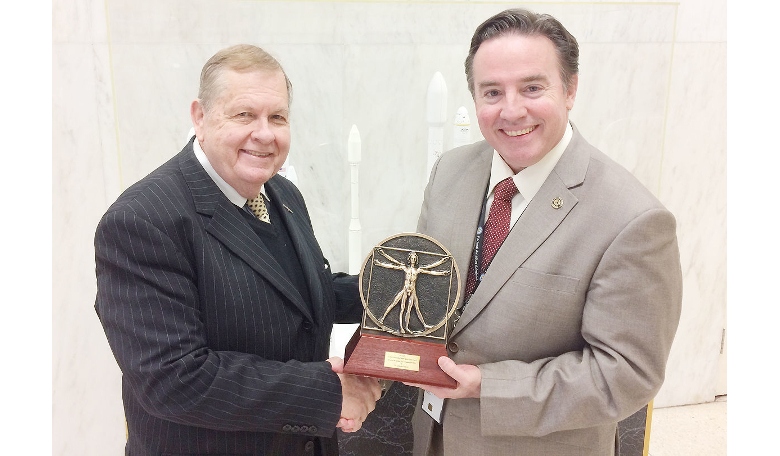ROOM Editorial Board Member Joe Pelton is a space enthusiast, futurist and award-winning author and editor of more than 50 books and over 300 articles in the field of space, satellite communications systems, future technologies and urban planning.
His great achievements in the areas of space safety and cosmic hazards were recently acknowledged and celebrated by the presentation of two prestigious awards.
Joe received the 2017 Lifeboat Foundation Guardian Award, in recognition of his lifelong dedication to advance the science of space safety and cosmic hazards prevention for the greater good of humankind, and his tireless pursuit to educate the general public about the threats to humanity that can come from solar storms, comets and asteroids, and orbital debris.
The Lifeboat Foundation is a non-profit nongovernmental organisation dedicated to encouraging scientific advancements while helping humanity survive existential risks and possible misuse of increasingly powerful technologies.
He was also recently awarded the Leonardo da Vinci Award for Lifetime Achievement, the highest accolade of the International Association for the Advancement of Space Safety, a non-profit organisation dedicated to furthering international cooperation and scientific advancement in the field of space systems safety.
Joe says he is “honoured and awed” to receive the awards, and they are inspiring him to pursue the LAPSE (The Lagrangian Protector against Solar Ejection) project.
Joe pioneered the idea of the creation of LAPSE, an electromagnetic shield to be deployed at L-1, some 1.5 million kilometres out in space, to mitigate the effects of the Earth’s diminishing natural shielding provided by the Earth’s magnetosphere, preventing a major blast of coronal mass ejected ions from the Sun from destroying the Earth’s electronic grid, pipelines, satellites and communications and networking systems, including the Internet.
"ESA's Swarm Satellites and NASA's MMS satellite have confirmed that the Earth magnetosphere is shifting from North to South,” he said. “As a result, the natural protective shielding of Earth from Solar Storms could be reduced to 15 percent of what they are today. Lloyd's of London estimated trillions of dollars of damage, even before the problem of our natural shielding was known.
“I intend to work to get the space agencies of the world to recognize the danger and explore constructing the LAPSE megastructure in space to defend Earth," he affirmed.
Joe is Director Emeritus at the Space and Advanced Communications Research Institute (SACRI) at George Washington University in Washington, D.C. and former Dean of the International Space University (ISU) in Strasburg, France.
He has worked at NASA, the Communications Satellite Corporation, served as Director of Strategy Planning for Intelsat, and headed the Interdisciplinary Telecommunications Program at the University of Colorado-Boulder, and is the founder of the Arthur C. Clarke Foundation.











